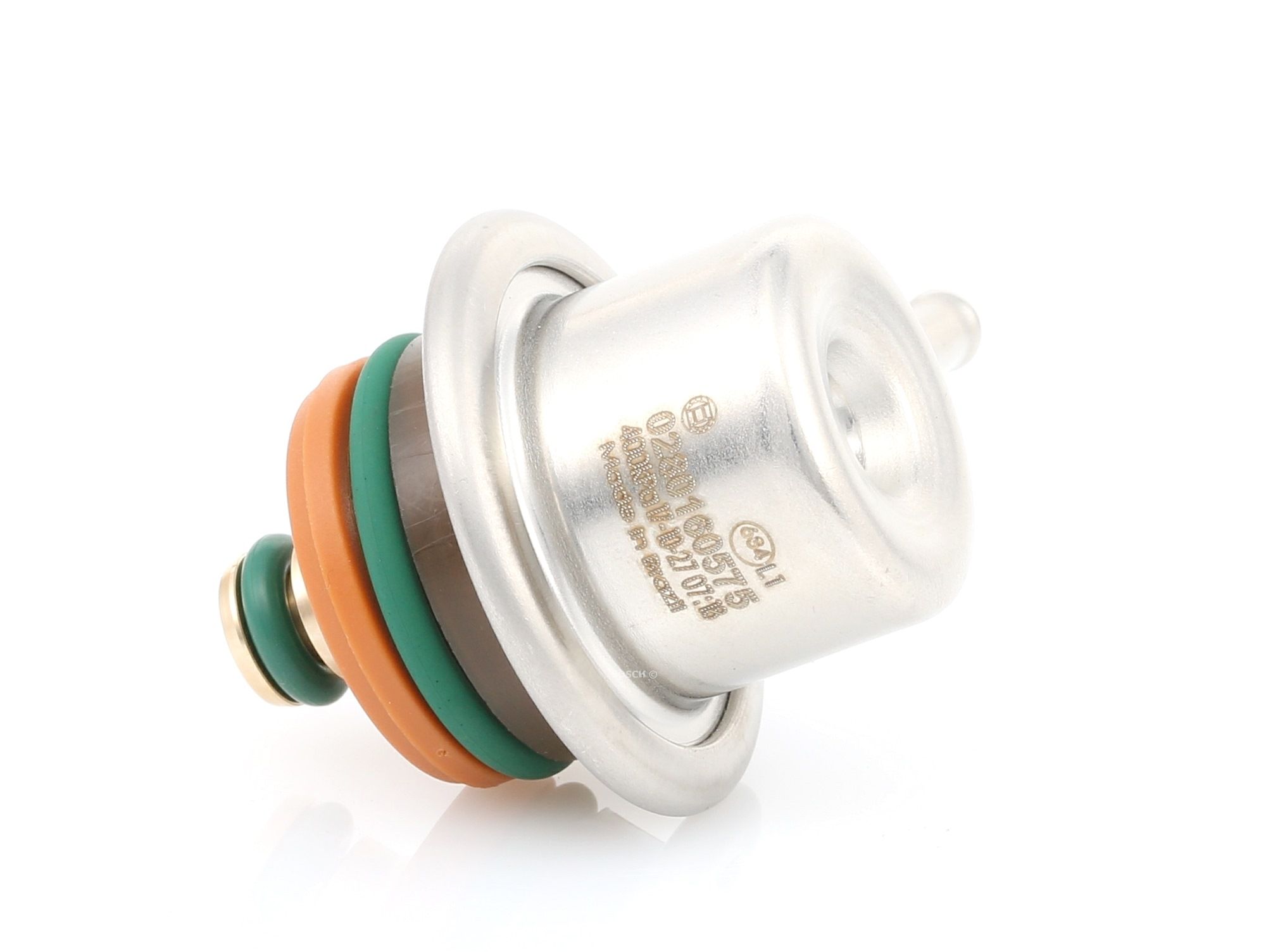Table of Contents
Fuel pressure regulator: where it is located, how it works, and failure symptoms
The fuel pressure regulator or FPR is an essential component of the fuel delivery system which is designed to ensure a stable supply of fuel to the engine and maintain ideal pressure levels across the fuel injectors, particularly when there are dramatic changes in RPM or the vehicle’s demand for fuel. This spring-loaded diaphragm mechanism is connected to the fuel pump, intake manifold and fuel rail, and it usually features an outlet for redirecting excess petrol or diesel back into the tank. The FPR regulates the fuel pressure according to the air pressure/boost in the intake manifold. As the air pressure reaches the top of the mechanism, the spring pushes the diaphragm down, reducing excess fuel and increasing the pressure created by the pump. However, when the engine is idling, a vacuum is created in the intake manifold which sucks out fuel and, in turn, reduces the pressure.
To put it simply, the device helps the engine to maintain the proper fuel-boost ratio and ensures that the car fuel injectors are operating at the right flow rate for combustion. So why is this important? If the pressure is too low, the fuel injector won’t be able to inject a sufficient amount of fuel into the engine. Too much pressure, on the other hand, can cause the components to fail and result in an air-fuel mixture that is too rich.
Where is the fuel pressure regulator located?
The fuel pressure regulator can typically be found at one end of the fuel rail in systems that include a return feed for fuel. In returnless systems, the regulator is integrated in the fuel tank near to the pump so that it is easier to access. In this case, however, the FPR is trickier to replace.

Symptoms of a bad fuel pressure regulator
Although this component is designed to last as long as the car itself, there are several factors that can cause it to fail, including the extreme temperatures and pressures that it is exposed to. It also isn’t normally on your list of maintenance priorities when your vehicle is serviced and problems can go unnoticed for extended periods. It is important to know the common symptoms of a faulty fuel pressure regulator to detect pressure problems early and keep your engine working efficiently.

 BOSCH Fuel pressure regulator
BOSCH Fuel pressure regulator
 DENSO Fuel pressure regulator, common rail
DENSO Fuel pressure regulator, common rail
 DENSO Fuel pressure regulator, common rail
DENSO Fuel pressure regulator, common rail
 PIERBURG Fuel pressure regulator
3 bar
PIERBURG Fuel pressure regulator
3 bar
Fuel pressure regulator symptoms:
- A misfiring engine, stalling, power losses or poor acceleration
FPR malfunctions will disrupt the balance between fuel and boost pressure, which can make it more difficult for the ECU to accurately calculate the air-fuel ratio. This can negatively impact the ignition process, fuel economy and vehicle’s overall performance. If the air-fuel mixture is too lean or too rich, you may notice that your car suddenly loses power when driving and acceleration is unstable. This may also be a sign of a defective car fuel pressure sensor.
- Fuel leaks
This is one of the most common symptoms of a damaged FPR. When the component’s seals, housing or diaphragm become damaged or worn, fuel can easily escape to other parts of the vehicle. If you spot a fuel leak, you should get the car fixed immediately as petrol and diesel are highly flammable.
- Fuel inside the vacuum hose
One way to check for pressure regulator leaks is to inspect the vacuum hose connecting the mechanism to the intake manifold. If fuel is dripping down the hose, this is a sure sign that the mechanism needs to be replaced.
- Black smoke coming from the exhaust
FPR failure is one possible cause of black or dark grey exhaust smoke. The smoke often appears when your car is injecting too much fuel. A proper diagnosis is necessary to determine the root cause.
- Sooty spark plugs
If the car engine is running too rich, there is a risk of soot building up inside the combustion chambers. You should inspect the spark plugs for soot and debris as part of routine maintenance. If they are covered in soot due to an FPR fault, they should both be replaced.
How to check the fuel pressure regulator
After checking for the hoses and exhaust for leaks, you may want to test the device yourself. One of the easiest ways to do this is by connecting a pressure gauge to the Schrader valve or test port on the fuel rail. Let the engine idle and make a note of the pressure gauge readings. Compare these readings with the pressure specifications for your specific model in the car repair manual.
Products you may be interested in: Land Rover Discovery 2 fuel pressure regulator
Top products related to this topic:















